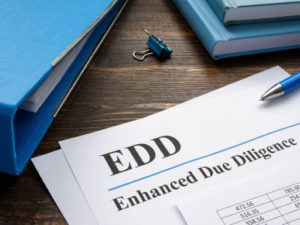Medical billing is key to keeping your healthcare practice running smoothly and effectively. It involves generating healthcare claims and submitting them to insurance companies to obtain payments for medical services rendered to patients. The process entails several steps that vary between healthcare facilities and may take several days or weeks to complete. These steps include the following:
Patient Registration or Credentialing
The medical billing process starts when a patient visits or schedules an appointment with your practice. Your front-office staff asks the patient about their personal information like name, age, and sex. They collect health insurance information, including the insurance provider’s name and policy number. All these details help create a patient file for claim generation and submission.
Insurance Eligibility and Verification
Insurance coverage differs between companies, policies, and individuals. Your biller should check every patient’s insurance information to determine which services and procedures are covered.
A medical biller uses the insurance information to contact the patient’s insurer to verify the coverage. They ask them about the copays and deductibles, so you understand how much to charge the patient. That’s if the patient’s insurance plan only partially covers your medical services.
Your biller notifies the patient if a patient’s insurance doesn’t cover the service, procedure, or prescriptions offered. The biller tells your patients that they’ll bear the financial responsibility for the costs involved.
Medical Billing Coding (Superbill Creation)
When patients check in, they fill out forms for their files if it’s their first time at your practice. If it’s a return visit, they confirm or update the information the doctor has on file. They provide identification documents such as a passport or driver’s license and a valid insurance card.
You collect copayments at the point of service, before or after the patient’s visit. The patient checks out, and their medical report form gets sent to the medical coder. These coders abstract, translate, and convert the data in the report into a usable, accurate diagnosis and procedure code.
The medical coder creates a report known as a superbill, which compiles all the data gathered from the start. It contains information about the medical service offered, including
- Provider’s name
- Physician’s name
- Patient’s demographics
- Medical history
- Procedures or services rendered
- Diagnosis and procedure codes
These details are key to generating a claim. Once the coder finishes creating the superbill, they send it to a medical biller using a software program.
Claims Generation
Once the medical biller receives the superbill, they use the details to prepare a medical claim using medical billing software. The biller includes the costs of the procedures or services rendered in the claim. Your medical biller goes through the claim to confirm it complies with the HIPAA and payer standards for medical coding and format.
Claims Submission
The medical coder and biller check the claim to verify its accuracy and compliance for submission. In most cases, the claim gets submitted electronically to the clearinghouse, a third-party company that mediates between health insurers and healthcare providers. It receives and reformats claims from medical billers and sends them to payers.
Clearinghouses relieve medical billers of the burden of collecting the information needed to generate a claim and format it correctly. Instead, the biller only sends relevant information to the clearinghouse, which reformats and transmits the claim to insurers.
Monitor Adjudication
When a claim reaches the payer, it undergoes adjudication. This is a process where payers evaluate medical claims to determine their validity and compliance. They determine how much to reimburse the provider if the claims are valid.
During adjudication, the payer may accept, reject, or deny the claim submitted. An accepted claim is payable according to the insurer’s agreements with the healthcare provider. A rejected claim is one with errors that require correction for resubmission. As for a denied claim, it’s one the insurer refuses to reimburse.
Patient Statement Generation
Your staff bills the patient for the outstanding charges after the payer processes the claim. The biller prepares a statement that entails a detailed list of services and procedures offered and their costs. It includes the amount paid by the insurer and the outstanding amount for the patient to pay.
Statement Follow-Up
The final step in the medical billing process involves making sure the patient pays the bills. Your practice’s biller follows up with patients whose bills are due by calling or emailing them. In the worst-case scenario, they send the patient’s account to collection agencies to get reimbursed for their services.
Get the Best medical billing Services Today
Every healthcare practice has specific steps and guidelines for collecting payments for the services rendered. If you want to get paid more and faster, work with a professional billing company. They offer the best medical billing and collection services to keep your practice running well. These pros complete the revenue cycle to guarantee optimum profits and efficiency.





Be First to Comment